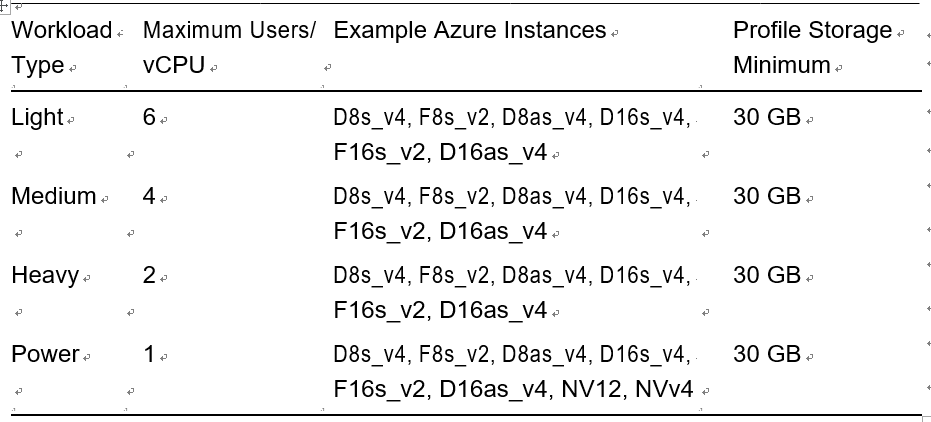Azure Virtual Desktop Multisession (Pooled)
Sizing Recommendation
Table 2-6 are the reference usage profiles and VM sizes available for pooled/multisession AVD. The table shows an example of a smaller, proof-of-concept scenario with a user workload of fewer than 20 users.
Table 2-6. Azure Virtual Desktop Pooled Sizing Recommendation for POC

Table 2-7 shows an example of a smaller, proof-of-concept scenario with a user workload of more than 20 users.
Table 2-7. Azure Virtual Desktop Pooled Sizing Recommendation

It is always recommended to consider the application/software recommendations while deciding on the usage profile for pooled instances.
Multisession (Pooled) sizing example: Consider you have 100 users who want to use application “xyz” on a pooled host pool, and all users are from the same region. The application xyz recommendation is to have minimum one CPU and 2 GB memory. In this case, you can go with a D8s_v4 size VM, which comes with eight CPUs and 16 GB memory, and it will allow us to assign eight users per VM. D4s_v4 can be used, but it will increase the number of VMs, which results in additional cost for the OS disk. Table 2-8 is the reference size and per user cost calculation.
Table 2-8. Azure Virtual Desktop Pooled Sizing Example

Azure Virtual Desktop Single-Session (Personal) Sizing Recommendations for Greenfield Deployment
For VM sizing recommendations for single-session scenarios, we recommend at least two physical CPU cores per VM (typically four vCPUs with hyperthreading). If you need more specific VM sizing recommendations for single-session scenarios, ask the software vendors specific to your workload. VM sizing for single-session VMs will likely align with physical device guidelines.
Test Pooled/Personal Azure Virtual Desktop Workload
Microsoft recommends using simulation tools (such as LoginVSI) to test your Azure Virtual Desktop with both stress tests and real-life usage simulations. Make sure your system is responsive and resilient enough to meet user needs, and remember to vary the load size to avoid surprises after moving into production.
